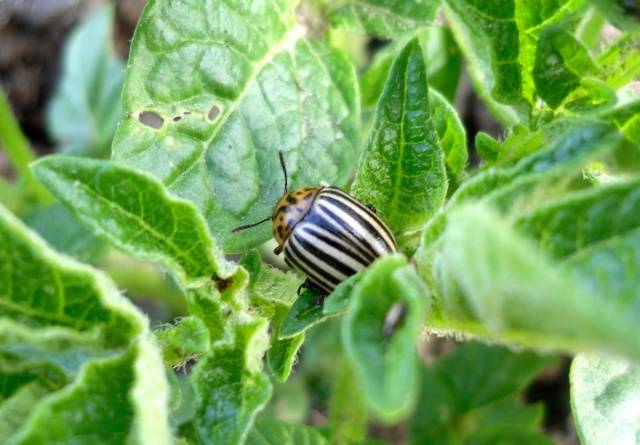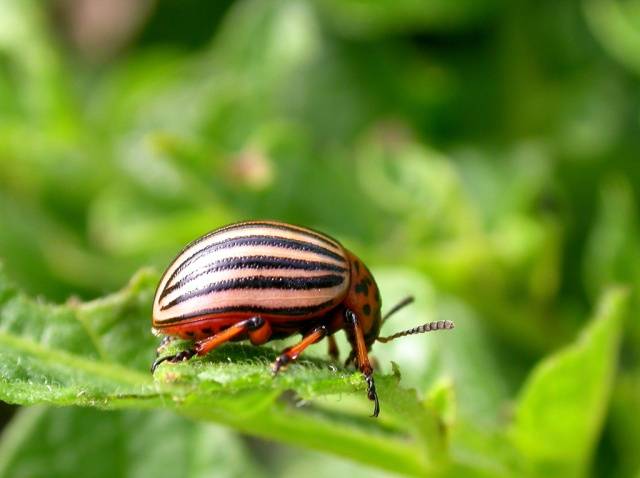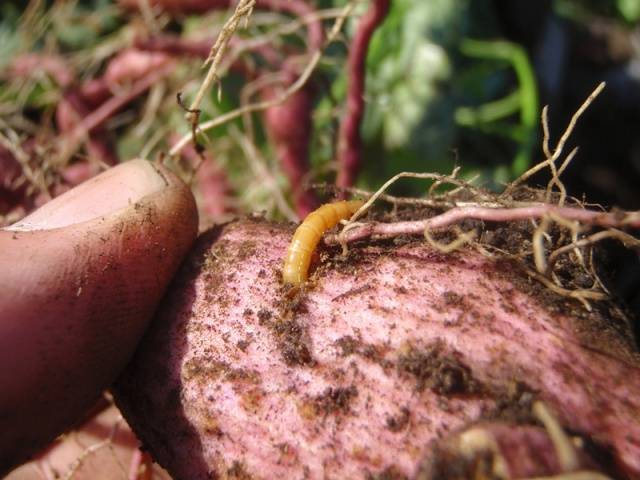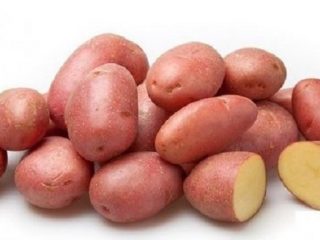Content
It is not for nothing that potatoes are called the second “bread”, because this root crop has firmly established itself on the tables and in the gardens of Russians. There is probably no dacha or suburban area on which at least a few potato bushes, or even an entire potato field, would not be planted. Growing potatoes is not difficult: the crop is unpretentious and stable, produces good yields, the problem is pests - too many insects love to feast on potatoes and their juicy shoots.
Potato pests and the fight against them take up a good half of all the time that a summer resident devotes to the beds. You can see potato pests with photos and descriptions, as well as learn about possible treatment of bushes from this article.
Main potato pests
So, the main goal of a modern gardener is to protect potatoes from pests and dangerous diseases. All protective measures can be divided into preventive (or preventative) and real. Of course, it is easier to deal with any problem at the initial stage, and even more effective is to prevent it.
In fact, there are so many potato pests that it is almost impossible to predict the appearance of one or another insect. Most of them are transported along with planting tubers, soil, garden tools and even water, some beetles fly in whole flocks along with air currents (in the wind), other pests live in the ground for years, for the time being, without detecting their presence.
You need to know the “enemy” by sight, so below we will present a photo and description of potato pests that pose the most serious danger, and also propose effective measures to combat these insects.
Colorado beetle
There is probably no person who does not know what the notorious “Colorado” looks like. This is a small round beetle, the body length of which can reach 1.5 cm, and its chitinous durable shell is colored with longitudinal yellow-brown stripes.
Interesting! The shade of the Colorado potato beetle's stripes and the intensity of the color of its larvae depend on the amount of carotene, because only this element is not absorbed by the pest's body and accumulates in its tissues. The more potato leaves the insect ate, the “oranger” its color.
The Colorado potato beetle is the most dangerous pest, because due to its “activity” you can easily lose most of the crop. Although the Colorado rarely eats potato tubers and practically does not damage them, it manages to destroy all the green mass of potato bushes very “in time”. As a rule, the period of activity of the pest and its larvae coincides with the time of flowering of potatoes and setting of tubers - potatoes simply do not form under damaged bushes, since photosynthesis is disrupted and the plant dies.
The greatest danger to green potato shoots is posed by the larvae, not the adult pests. Females and males of the Colorado potato beetle can quietly overwinter in the ground at a depth of about 30 cm, falling into a kind of sleep. In spring, pests crawl to the surface and lay eggs on the underside of young potato leaves.
After 10 days, larvae emerge from the eggs, which intensively eat foliage and young potato stems for about three weeks, then crawl underground and pupate - this is how an adult is born. For another 20 days, the young pest gains “fat” and happily eats potato tops, after which it begins laying eggs and spreading new individuals of its family.
Colorado potato beetles are dangerous for potato plantations for several reasons:
- the great gluttony of these pests - potato bushes simply “disappear” in a matter of hours;
- the vitality of Colorado potato beetles is truly amazing: they tolerate frosts, can live up to three years (despite the fact that the life cycle of an ordinary individual is 12 months), are able to fall into suspended animation and wait in the ground for the right moment to awaken;
- pests fly with the wind over enormous distances (several tens of kilometers), so they can suddenly appear where they have never been (by the way, this is how “Colorados” spread throughout the world);
- Pests very quickly get used to insecticidal preparations; they can only be controlled with systemic means.
In addition to potatoes, Colorado potato beetles love other crops of the nightshade family, so they often appear on tomatoes, eggplants, and physalis.
It is difficult to combat the pest; potato processing alone is not enough.At least three times a season, the gardener will have to use special preparations or regularly collect pests by hand, while simultaneously destroying their eggs on the potato bushes.
Today there are many toxic drugs against the Colorado potato beetle (Komador, Iskra, Aktara and others), and pre-planting treatment of potato tubers with insecticides is also effective. But it is necessary to remember about the harm to human health and refuse processing at least 20 days before harvesting potatoes.
Among the folk remedies for combating such a pest as the Colorado potato beetle, we can name:
- manual collection of insects;
- irrigating potato bushes with infusions of tansy, currant, celandine or basil;
- planting green manure that cleanses the soil (for example, mustard);
- compliance with crop rotation (for at least four years you should not plant potatoes and other nightshades in the same place);
- alternating potato bushes with crops that repel pests (coriander or legumes, for example).
Wireworms
Another inveterate pest of potatoes is a small worm, about 2-2.5 cm long, colored red or yellow. This is the larva of a click beetle, popularly called “wireworm”. The worm was so named because of its hard body, similar to a metal wire.
Click beetles themselves do not eat potatoes, so they are not considered pests. In nature, these insects live in thickets of wheatgrass and feed on the tender young roots of this weedy herbs.
Hence the main preventive measure to combat the wireworm pest - timely and regular weeding in order to prevent the beds from becoming overgrown with wheatgrass and other weeds.
You can find out about the damage to potatoes by the wireworm pest by examining the tubers: numerous passages of small diameter will tell about the life activity of the larvae. The passages in potatoes themselves are not so dangerous as the fact that they are often a “gateway” for infections and nematodes. As a result, potato tubers rot and become unfit for consumption.
The appearance of bushes affected by the pest is also characteristic: stems dotted with passages wither, become unviable, as a result the potato bush lags behind in development and dies.
To protect potatoes from such a pest as wireworm, it is necessary to take comprehensive measures:
- Fertilize the soil under the potatoes with ammonia preparations.
- Reduce the acidity of the soil by scattering quicklime over its surface.
- Plant plants that attract wireworms along with potatoes.
- Pull out weeds by the roots, often weed and loosen the soil between the potato beds.
- Treat potato tubers before planting using insecticidal preparations (such as “Taboo”).
Cicadas
In appearance and the type of damage to potatoes, leafhoppers resemble aphids or potato flea beetles. These are small pests that can nevertheless cause significant damage to the potato crop, because they feed on cell sap, damage leaves, which leads to withering and drying out of the bushes.
The activity of leafhoppers is manifested in the following factors:
- at the puncture sites, brown spots appear on the potato leaves, which merge and the leaf dies;
- leaves bitten by pests become infected with fungal spores, infections and small parasites easily penetrate into them;
- The pests themselves can additionally infect potatoes with dangerous infections, because they are carriers of many diseases (for example, stolbur).
Pest control measures are purely preventive – treatment of tubers before planting using insecticidal preparations such as Tabu or Cruiser. If leafhoppers have appeared on the site for the first time, you can try irrigating the potato rows with Karate Zeon.
Potato flea beetle
The most dangerous pest of potato tops is the small brown flea beetle. There are many types of such pests, they are distributed throughout the world.
It is adult flea beetles, reaching three millimeters in length, that pose a danger to potato leaves. But the larvae of this pest - thin and elongated bodies with three pairs of short legs - can infect the root system of potato bushes, which will lead to withering of the plant and loss of yield.
You can tell that a potato is infested with a flea beetle by looking at the depressions in the leaves that are characteristic of this pest, which turn brown and dry out over time.
An effective means of controlling the pest is the insecticide “Tabu”; treating the bushes with phosphamide at a concentration of 0.2% also works well (potatoes need to be treated every 10 days until the tubers set).
Adult beetles can be caught using glue baits. If the garden is small, spraying potato bushes with chamomile infusion or dusting with a mixture of tobacco dust and wood ash helps a lot.
Potato nematodes
One of the microorganisms harmful to potatoes is the nematode. These are microscopic worms that cannot be seen with the naked eye. But their presence is very clearly visible from the state of the potato bushes: they are depressed, lagging behind in development, do not form tubers at all or form very small tubers.
Female nematodes are round, and males are oblong, but you can only see the frozen eggs of these pests - cysts. It is no coincidence that pests “freeze” their eggs: this is done so that the offspring can survive the winter and also wait for a harvest year.
In the form of cysts, the nematode can remain in the ground for up to ten years, after which it wakes up and develops as usual. Externally, pest eggs look like millet grains; they usually stick to the roots and tubers of potatoes.
Potatoes are affected by three types of nematodes:
- Stem nematode shows its presence by shiny gray spots appearing on potato tubers. Under the gray film you can see the pulp destroyed by the pest, turned into dust. Under a microscope, you can also see the pests themselves - nematodes accumulate on the border of the affected area and healthy pulp.The stem nematode penetrates potato tubers along the stems, damaging them along the way.
- Root nematode parasitizes exclusively on the roots and tubers of potatoes. In those places where pests accumulate, small compactions appear - galls, the diameter of which is about 1.5 mm. These lumps grow, merge, and ultimately deform the roots and tubers of the potato. Additionally, infections and fungal spores settle in the wounds.
- Golden nematodes, like their brothers, they are very tenacious and very dangerous. Pests are transferred to potatoes along with soil and water; tubers can be infested with gardening tools.
The pest can be controlled with insecticides such as Tiazone or Carbamide. It is very important to observe crop rotation, planting potato areas with corn, beans or perennial grasses.
Potato scoop
It is not the brown moths themselves that pose a danger to potatoes, but their larvae - light-colored caterpillars. Pests overwinter on wheatgrass and love shade and high humidity, but, in principle, cutworms are unpretentious and can live in any place.
The cutworm larva gnaws its way to potato tubers through the neck of the stem, thereby leading to the death of the entire bush and damaging the crop. In addition to insecticidal preparations, the pest can be controlled by removing weeds and placing pheromone traps between rows.
Potato moth
Outwardly, this pest is similar to the cutworm, but differs in that it is active not seasonally, but throughout the entire time until the temperature drops below +10 degrees.
The potato moth is dangerous primarily because of its fertility - in one summer season, up to eight generations of this pest can appear. Adults do not harm potato bushes, but the larvae damage both the above-ground parts and tubers.
You can protect your area from moths in the following ways:
- store potatoes at a temperature of 5 degrees;
- plant well-warmed tubers;
- hill up bushes high;
- dig the soil deeply in spring and autumn.
conclusions
How to deal with potato pests is, in principle, clear - you need to use special insecticides. But the gardener must understand that such substances are toxic not only to insects, but also to humans.
To ensure that the harvest is safe and as useful as possible, it is better to carry out preventive measures, such as maintaining crop rotation, disinfection, and planting green manure. If the pest attacked suddenly, you can try folk remedies or biological protection. Toxic substances should be a last resort, which is used after all unsuccessful attempts to save the potatoes.




























